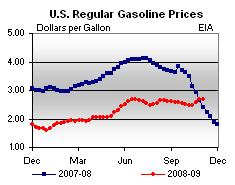History: economy infrastructure politics ports rivers
by Patrick
Comments Off on “The Geography of Recession”
“The Geography of Recession”
Here’s an interesting take from an Austin intelligence firm on how geography shapes global infrastructure, politics and economies.
Navigable rivers and ports, arable land, borders, weather and other natural features play a big role in how available resources are tied up or freed up, according to Stratfor. Such givens influence how governments and economies organize to meet challenges and also how well they succeed.
Excerpt:
Taken together, the integrated transport network, large tracts of usable land and lack of a need for a standing military have one critical implication: The U.S. government tends to take a hands-off approach to economic management, because geography has not cursed the United States with any endemic problems. This may mean that the United States — and especially its government — comes across as disorganized, but it shifts massive amounts of labor and capital to the private sector, which for the most part allows resources to flow to wherever they will achieve the most efficient and productive results.
Laissez-faire capitalism has its flaws. Inequality and social stress are just two of many less-than-desirable side effects. The side effects most relevant to the current situation are, of course, the speculative bubbles that cause recessions when they pop. But in terms of long-term economic efficiency and growth, a free capital system is unrivaled. For the United States, the end result has proved clear: The United States has exited each decade since post-Civil War Reconstruction more powerful than it was when it entered it. While there are many forces in the modern world that threaten various aspects of U.S. economic standing, there is not one that actually threatens the U.S. base geographic advantages.
Oil and gas prices Roads Travel: economy
by Patrick
Comments Off on Rising gas prices for a growing economy
Rising gas prices for a growing economy
Rising gas prices, along with a renewed American appetite to drive, offer yet more signs that the recession has lifted.
The U.S. economy, much of it fed by federal stimulus injections, grew 3-1/2 percent last quarter despite unemployment climbing to a two-and-a-half-decade high.
Growing also are gas prices, according to Energy Information Administration data. Regular unleaded swelled 26 cents a gallon since last month, and today settled at a yearly high of $2.69 a gallon.
San Antonio prices average $2.53, up nearly 20 cents from a month ago, AAA reports.
